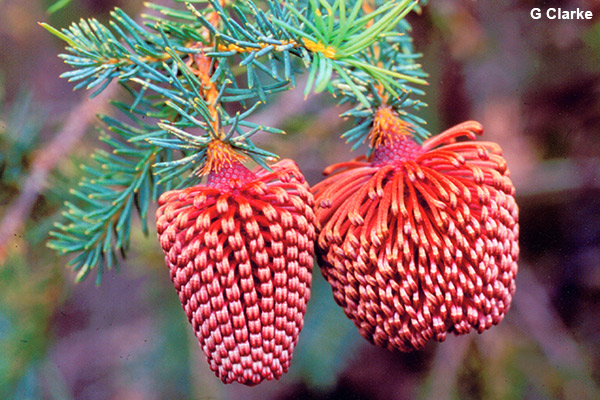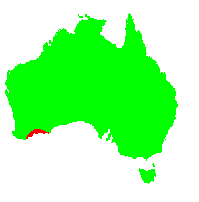General Description:
Banksia nutans is a small, bushy shrub up to about 2 metres high. The leaves are narrow linear and up to about 20 mm long. The cylindrical inflorescences are seen in winter to summer and are about 7 cm wide at flowering. They are unusual in that they are pendulous on short lateral branchlets, a feature shared by only a few other species (eg. B.aculeata, B.caleyi, B.lemanniana, B.rosserae). The flowers are dull pink in bud and open to a rusty brown colour. They are often held within the foliage but, despite this, the flowers are quite conspicuous as the foliage is not excessively dense.
Two botanical varieties are recognised. Banksia nutans var. cernuella differs from the type form (var. nutans) in having smaller flowers and follicles on the fruit that are smaller and less wrinkled in appearance.
This species does not develop a lignotuber and is killed by fire. It relies on seed for regeneration.
B.nutans is a popular plant in cultivation in areas where it grows successfully. It is best suited to areas with a dry summer and is difficult to maintain in humid areas such as the east coast of New South Wales and Queensland. It requires sandy, well drained soils in full sun or partial shade. It will tolerate pruning but not below existing foliage.
Propagation from seed is reliable without pre-treatment and cuttings also succeed but may be slow to strike and success rate may be well below 100%.

Banksia nutans
Photo: Geoff Clarke
 Australian Native Plants Society (Australia)
Australian Native Plants Society (Australia)













